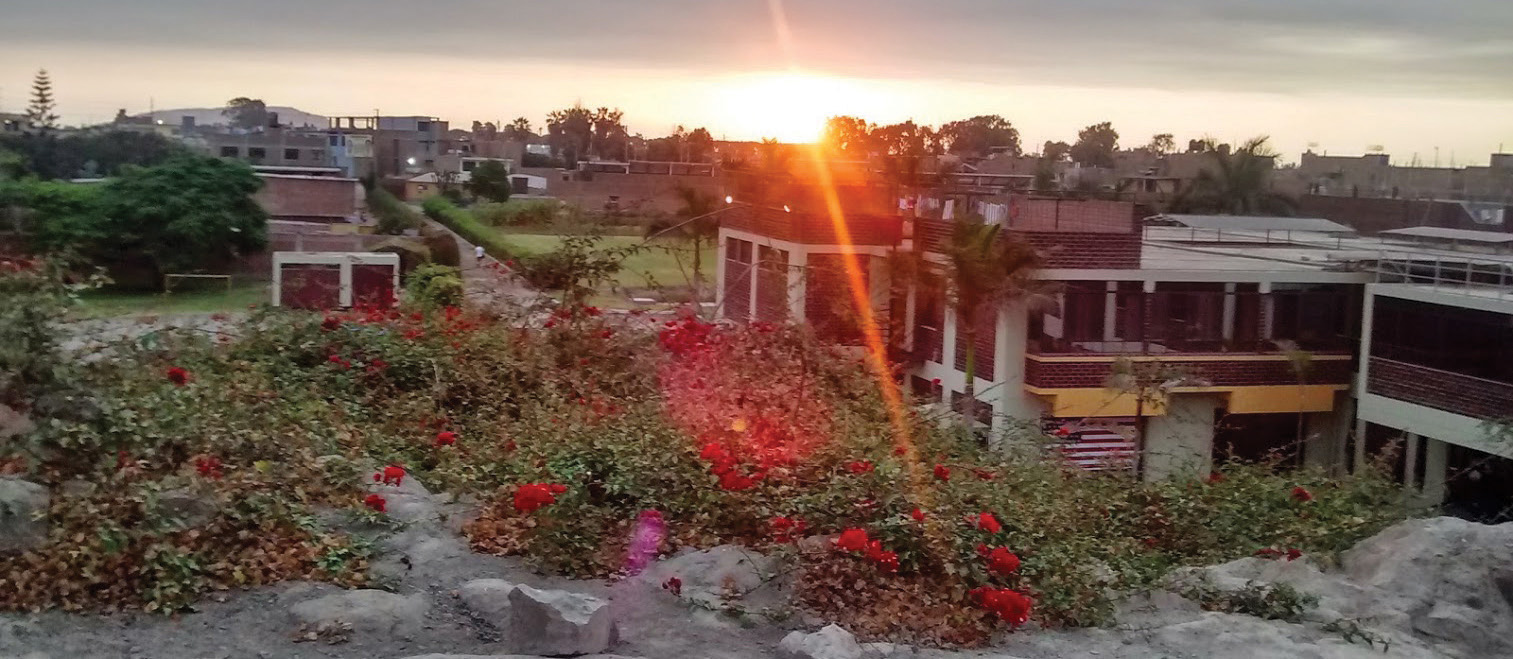
I was blessed to participate in a mission trip to Casa Hogar Juan Pablo II in Lima, Peru, this past Jan. 6-14. I had already participated in two mission trips with college students to the San Lucas Toliman mission in Guatemala, which were both powerful experiences. The San Lucas Toliman mission was founded by Father Greg Schaffer, who was a priest of the Diocese of New Ulm, Minn., and it is amazing how that mission has impacted the local Guatemalan community. But I was excited for the opportunity to be at Casa Hogar Juan Pablo II, a mission of the Diocese of La Crosse, and it didn’t disappoint. Savannah Siegler, the director of campus ministry at The Newman Parish, organized the mission trip. Along with Savannah and myself, there were 10 college students and three Newman parishioners who took part.
Casa Hogar was founded by Father Joe Walijewski, a priest of the Diocese of La Crosse, in 1986 to serve orphaned children in Lima, Peru. Casa Hogar is a beautiful place. When the gate first opens to enter Casa Hogar, you notice the beautiful green grass and trees, the buildings covered in vibrant colors, and the chapel. Right away, the beauty of the environment proclaims the goodness of the place. Next you see the goodness of the people of Casa Hogar as you meet the children, family teachers, staff and Monsignor Joseph Hirsch. Casa Hogar is built on a family model. There are apartments in which the family teachers live with their own children and eight of the children of Casa Hogar. A couple of times, we were able to visit with the families in their apartments and share a meal with them to experience their life. Also, through conversations and interactions with the children and family teachers, the positive impact of the family model was obvious.
When we first arrived, most of the children were not present at Casa Hogar; they were away for a home visit or were with other family members. Many of the children have a living parent(s), but the parent(s) cannot raise them for various reasons. We noticed one child, however, who was serving at Mass. He remained behind because he didn’t have another place to go. His story stood out more, perhaps, because he was the first child we were able to meet. He had been living on the streets before Casa Hogar and his transition to the life at Casa was not smooth or easy. His family teachers had to show him extraordinary love, for he had been hardened by the experience of having to survive on the streets. But over time, that love transformed his heart and he was a kind and happy child. The personal investment of his family teachers was so deep, generous and steadfast that it led to such a beautiful transformation.
It didn’t seem to me that this transformation will be limited just to the children. This transformation will impact the way these children live in their communities after they graduate and leave Casa Hogar. In conversations with older children at Casa Hogar, I was impressed by how they desired professions that would allow them to deeply and personally invest in others. It was clear they had internalized the ethos of Casa Hogar and wanted to live it out even when they were no longer within that beautiful environment.
While there could probably be ways to use the same resources to help more children, the personal investment made in each child at Casa Hogar is what makes it so beautiful. This is the lesson I took away most from Casa Hogar, the importance of truly investing in others. It’s fitting that the initial money for Casa Hogar was given by Pope St. John Paul II. He was a proponent of personalism which is a philosophy that exemplifies the unique and unrepeatable dignity of each human person. This personalist philosophy is put into action at Casa Hogar. As I stood on top of the hill overlooking Casa Hogar and the surrounding area, I thought how beautiful it would be if more of the Church and world could be dedicated to investing so fully in every person.
FATHER DAN OUDENHOVEN
Pastor of The Newman Parish in Eau Claire
Published December 2020 Catholic Life Issue

